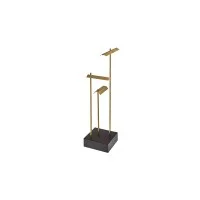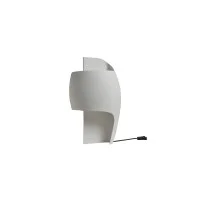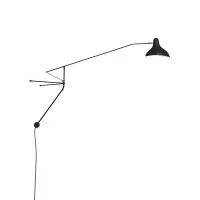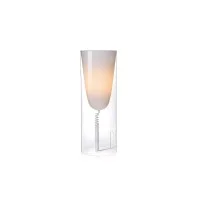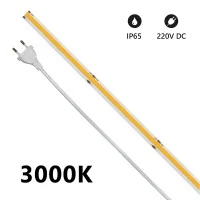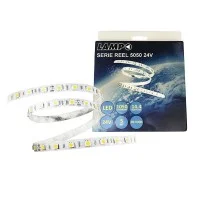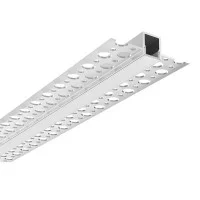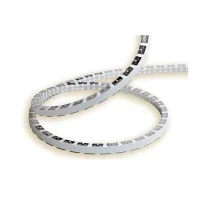New energy label rules
Each appliance in accordance with the law, must always have an energy efficiency label in order to be sold. In this way you will be aware of the actual energy consumption of the appliance before buying it.
Since 2021 there have been changes and this is the topic we will discuss in this article.
The introduction of new energy labels was necessary for the proliferation of products with excellent performance from the point of view of energy consumption, so as to "exceed" the pre-existing energy efficiency scale.
But first let's take a step back, in order to understand well what energy labels are for.
How are the new energy efficiency classes for light bulbs and LEDs calculated?
The calculation of energy efficiency classes has also been redefined. In fact, it is not possible to convert the values of the old energy label and, therefore, the energy class of the various products must be calculated as follows. The energy class of a luminaire is no longer determined by consumption, but by calculating the total luminous efficacy, therefore the ratio between the useful luminous flux and the energy consumption, all multiplied by the total power factor.
This table allows you to understand the lumen/watt ratio of a light bulb and, depending on the value, it will be assigned one of the energy classes from A to G.
| New energy efficiency class | Total lumen/Watt efficiency |
| A | from 210 + |
| B | from 185 to 210 |
| C | from 160 to 185 |
| D | from 135 to 160 |
| E | from 110 to 135 |
| F | from 85 to 110 |
| G | util to 85 |
What are the energy labels for?
Their purpose is to classify household appliances according to the impact they have on the environment. This can be calculated based on how much energy they consume to function.
To classify them, we start from letter A (corresponding to household appliances with the lowest environmental impact) up to letter G (corresponding to household appliances that require greater consumption). A, B and C are characterized by the green color, as it is more environment-friendly. The D is yellow, the E and F are orange while the G is red, to clearly indicate the high energy consumption.
Following the technological progress, in addition to the already existing series, the classifications A + and A ++ were then introduced, to which the A +++ was added, which had to indicate the most energy efficient products. However, it was later realized the need for a more uniform and precise classification method, adaptable in the same way for all types of products.
To avoid uncertainties, the European Commission has established new rules.

New energy label rules
The new energy labels cover household refrigerators, washing machines, dishwashers, TVs and light sources. For all other categories such as air conditioners, dryers, vacuum cleaners, the introduction of the new label is expected from 2022. These new labels therefore have a classification system similar to the old one, from A to G, with the exclusion of categories A +, A ++ and A +++.
This new method obviously involves a reclassification of all products, which inevitably change category, adapting to the new rules. But reclassifying a product by assigning it a lower category than the previous one, especially at the beginning, can cause confusion, and that is why both labels on the product were kept for the first time.
In this way it was possible to familiarize with the new classification.
Household appliances such as refrigerators, dishwashers, washing machines and televisions have had to place the label with the new classification as of March 1, 2021. For lamps and bulbs, on the other hand, the deadline was 1 September.
As if that weren't enough, the new energy labels also feature a QR code. Very useful indication if you are interested in deepening the discussion and obtaining more information. To find out more, simply scan the QR code with the camera of your smartphone and you will be redirected to the explanatory page.

Appliances that do not require the label
However, there are some devices that do not have a light bulb included, which do not fall under this obligation. Among these we find:
luminaires with integrated (and therefore non-separable) LED
light source lighting fixtures with separable light source: this is the case of fixtures that contain a LED bulb in
the package lighting fixtures that do not offer any light source: if the bulb is to be purchased separately
Conclusions
In summary, therefore, the new EU energy labeling will allow a clearer and more uniform classification of the energy efficiency of household appliances, that is:
1. new stricter classification parameters: the energy efficiency class will reach a maximum of A, no longer A +, A ++ and A +++;
2. consumption: the operating power (Watt), the light output (lm) for the lighting devices and the estimate of annual consumption or for a certain number of cycles, based on the type of device.
3. other features: for example, in the case of a dishwasher, the number of place settings, the water consumption, the duration of the Eco program and the noise level (db) are specified.
4. the QR code: to be scanned with the smartphone, it allows you to access further information on the product from the point of view of energy efficiency.

For more information, do not hesitate to contact us
Written by Alice Pruccoli
Share this content
